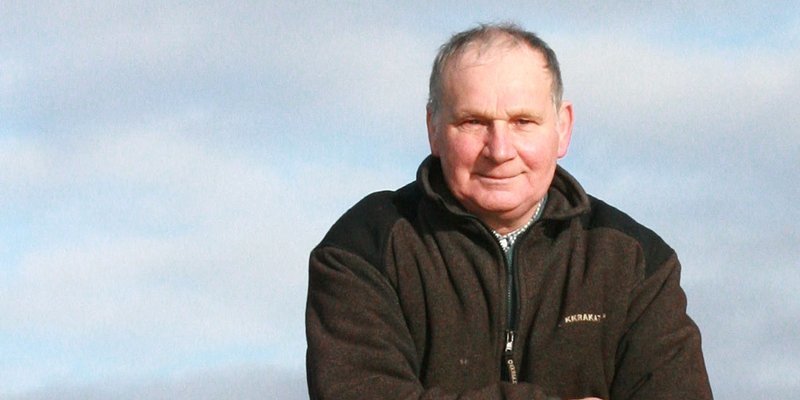An attempt has been launched to restore the Edinburgh gravestone of a Perthshire poet and journalist described as Scotland’s second Robert Burns.
At the time Professor Rory Watson, Stirling University’s head of English studies and editor of The Literature of Scotland, said the destruction of the headstone was the result of “mindless bureaucracy”.
“This is a form of vandalism and in literary terms it has consigned a worthy poet to guaranteed obscurity. I am horrified and offended they have done this.
“All creative people should be dignified with a memorial. Literary reputations rise and fall and when people want to trace a writer a gravestone is an important point of reference.”
Nicoll was born the second child in a family of seven in the farmhouse at Little Tullybelton and was quickly spotted as a gifted child. His early employment was with a Perth wine merchant before he moved to Dundee and, with money borrowed from a friend, set up either a secondhand bookshop or circulating library. Accounts vary.
By this time he was already a prodigious writer and had been published in several journals, magazines and newspapers and became a known figure on the streets of Dundee, where he lectured about politics. After his first volume of poetry was published, his fame spread south and he was taken on by the Leeds Times as editor at the tender age of 22.
However, already possessed of a delicate constitution, Nicoll did not last long in the smoke of industrial England and begged from his deathbed to return home to Perthshire. On the way back, he stopped in Leith, where his illness overtook him and he died on December 7, 1837.
As well as his many articles and essays, three volumes of his poems had been published. A monument nearly 100 feet high was raised on the high ground above his birthplace in 1857.
It is hoped by highlighting the sad state of Robert Nicoll’s final resting place there will be a wider recognition and appreciation of his work.
Nicoll, who was born at Little Tullybelton near Bankfoot in 1814, was compared favourably to The Bard and their lives had many parallels.
Having been born into poverty near Perth, he died, aged just 23, just as his reputation was growing. He was buried in North Leith graveyard in Edinburgh but his gravestone was pushed over because of health and safety concerns.
Bankfoot resident and history enthusiast Thomas Brown was shocked to hear about the treatment of the marker and said it is a sign of the lack of recognition for one of Scotland’s best poets.
He said, “Robert Nicoll was claimed to have been Scotland’s second Robert Burns while he was still alive and he was one of the first to successfully write in the Burns style. I feel very sad that he hasn’t had the recognition he deserves and that’s reflected in the treatment of his grave.
“The headstone has toppled over and no one seems that bothered about it. I wrote to Edinburgh City Council but there seemed little interest and I think there should be more pride and respect for this man.
“If people are made aware of this issue they might also become more aware of the man and his work. He’s known around here because there is a monument to him and it’s a famous local landmark but he deserves so much more.”
Edinburgh City Council admitted toppling the gravestone, put up by admirers 70 years after Nicoll’s death and bearing the epitaph “Robert Nicoll: One of the Sweetest of Scottish Bards”.
Continued…
It is hoped by highlighting the sad state of Robert Nicoll’s final resting place there will be a wider recognition and appreciation of his work.
Nicoll, who was born at Little Tullybelton near Bankfoot in 1814, was compared favourably to The Bard and their lives had many parallels.
Having been born into poverty near Perth, he died, aged just 23, just as his reputation was growing. He was buried in North Leith graveyard in Edinburgh but his gravestone was pushed over because of health and safety concerns.
Bankfoot resident and history enthusiast Thomas Brown was shocked to hear about the treatment of the marker and said it is a sign of the lack of recognition for one of Scotland’s best poets.
He said, “Robert Nicoll was claimed to have been Scotland’s second Robert Burns while he was still alive and he was one of the first to successfully write in the Burns style. I feel very sad that he hasn’t had the recognition he deserves and that’s reflected in the treatment of his grave.
“The headstone has toppled over and no one seems that bothered about it. I wrote to Edinburgh City Council but there seemed little interest and I think there should be more pride and respect for this man.
“If people are made aware of this issue they might also become more aware of the man and his work. He’s known around here because there is a monument to him and it’s a famous local landmark but he deserves so much more.”
Edinburgh City Council admitted toppling the gravestone, put up by admirers 70 years after Nicoll’s death and bearing the epitaph “Robert Nicoll: One of the Sweetest of Scottish Bards”.
Continued…
